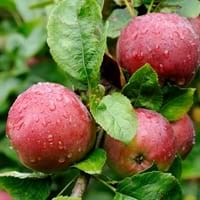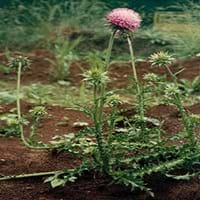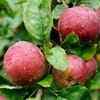Life Span
Perennial
Biennial
Type
Fruit
Bulb, Flowering Plants
Origin
Eastern Europe, Southern Europe, Russia/Siberia, Southern Asia, Western Asia
World/Pandemic, Europe, Asia
Types
not available
Crocus tommasinianus, Crocus etruscus, Crocus vernus, Crocus cambessedesii
Number of Varieties
Not Available
Habitat
Not Available
gardens, Grassland, open Woodlands, orchards, Pastures, tropical environments
USDA Hardiness Zone
3-8
2-10
Sunset Zone
6, 7, 8, 9, 14, 15, 16
21,22
Habit
Oval or Rounded
Upright/Erect
Flower Color
White, Pink, Rose
Red, Violet
Flower Color Modifier
Bicolor
Bicolor
Fruit Color
Yellow, Red, Green, Gold, Pink, Dark Red
Not Available
Leaf Color in Spring
Green
Green, Dark Green
Leaf Color in Summer
Green
Dark Green
Leaf Color in Fall
Green, Light Yellow, Brown
Dark Green
Leaf Color in Winter
Light Green
Light Green
Plant Season
Spring, Fall
Spring, Summer, Winter
Sunlight
Full Sun, Partial Sun, Partial shade
Full Sun, Partial Sun
Growth Rate
Medium
Very Fast
Type of Soil
Clay, Loam, Sand
Clay, Loam, Sand
The pH of Soil
Acidic, Neutral
Acidic, Neutral, Alkaline
Soil Drainage
Well drained
Well drained
Bloom Time
Early Spring, Spring
Spring, Late Spring, Early Summer, Summer
Tolerances
Drought
Pollution, Drought, Salt, Soil Compaction
Where to Plant?
Ground
Container, Ground
How to Plant?
Budding, Grafting
Seedlings
Plant Maintenance
Medium
Low
Watering Requirements
Requires regular watering
Average Water Needs, Do Not over Water, Never Over-water, Requires regular watering
In Summer
Lots of watering
Lots of watering
In Spring
Moderate
Moderate
In Winter
Average Water
Average Water
Soil pH
Acidic, Neutral
Acidic, Neutral, Alkaline
Soil Type
Clay, Loam, Sand
Clay, Loam, Sand
Soil Drainage Capacity
Well drained
Well drained
Sun Exposure
Full Sun, Partial Sun, Partial shade
Full Sun, Partial Sun
Pruning
Remove damaged leaves, Remove dead branches, Remove dead leaves
Prune to stimulate growth, Remove damaged leaves, Remove dead leaves, Remove deadheads
Fertilizers
Requires high amount of nitrogen
Nitrogen, Phosphorous, Potassium, Requires high amount of nitrogen
Pests and Diseases
Aphids, codling moth, mussel scale, Red spider mite, woolly aphid
Insects, Red blotch
Plant Tolerance
Drought
Not Available
Flower Petal Number
Single
Not Available
Foliage Texture
Medium
Coarse
Foliage Sheen
Matte
Glossy
Attracts
Not Available
Flying insects
Allergy
Not Available
Diarrhea, Nausea, Vomiting
Aesthetic Uses
Showy Purposes
Beautification, Showy Purposes
Beauty Benefits
Not Available
Not Available
Environmental Uses
Air purification
Air purification, Food for insects
Medicinal Uses
Alzheimer’s Disease, bowel syndrome, Cancer, constipation, Detoxifies lever, Diabetes, Diarrhea, gallstones, Healthy teeth, hemorrhoids, High cholestrol, Immunity, Improve heart health, Parkinson
Unknown, Unknown
Part of Plant Used
Fruits, Leaves
Stem
Other Uses
Used As Food, Used for its medicinal properties
Decoration Purposes
Used As Indoor Plant
No
No
Used As Outdoor Plant
Yes
Yes
Garden Design
Edible, Feature Plant, Fruit / Fruit Tree
Not Available
Botanical Name
MALUS domestica 'Royal Gala'
CARDUUS nutans
Common Name
Apple, Eating Apple, Royal Gala Apple
Musk Thistle, Nodding Thistle
In Hindi
Royal Gala Apple
कस्तूरी थीस्ल
In German
Royal Gala Apfel
Nickende Distel
In French
Royal Gala d'Apple
Musk Thistle
In Spanish
Manzana Royal Gala
Cardo de almizcle
In Greek
Royal Gala της Apple
musk Thistle
In Portuguese
Maçã Royal Gala
musk Thistle
In Polish
Royal Gala jabłko
Musk Thistle
In Latin
Regia Schola Apple
Carduus MOSCHUS
Phylum
Magnoliophyta
Magnoliophyta
Class
Eudicotyledones
Magnoliopsida
Family
Rosaceae
Asteraceae
Genus
Not Available
Carduus
Clade
Not Available
Angiosperms, Asterids, Eudicots
Tribe
Not Available
Cynareae
Subfamily
Not Available
Carduoideae
Number of Species
Not Available
Not Available
Season and Care of Royal Gala Apple and Musk Thistle
Season and care of Royal Gala Apple and Musk Thistle is important to know. While considering everything about Royal Gala Apple and Musk Thistle Care, growing season is an essential factor. Royal Gala Apple season is Spring and Fall and Musk Thistle season is Spring and Fall. The type of soil for Royal Gala Apple is Clay, Loam, Sand and for Musk Thistle is Clay, Loam, Sand while the PH of soil for Royal Gala Apple is Acidic, Neutral and for Musk Thistle is Acidic, Neutral, Alkaline.
Royal Gala Apple and Musk Thistle Physical Information
Royal Gala Apple and Musk Thistle physical information is very important for comparison. Royal Gala Apple height is 370.00 cm and width 460.00 cm whereas Musk Thistle height is 90.00 cm and width 30.00 cm. The color specification of Royal Gala Apple and Musk Thistle are as follows:
Royal Gala Apple flower color: White, Pink and Rose
Royal Gala Apple leaf color: Green
Musk Thistle flower color: Red and Violet
- Musk Thistle leaf color: Green and Dark Green
Care of Royal Gala Apple and Musk Thistle
Care of Royal Gala Apple and Musk Thistle include pruning, fertilizers, watering etc. Royal Gala Apple pruning is done Remove damaged leaves, Remove dead branches and Remove dead leaves and Musk Thistle pruning is done Prune to stimulate growth, Remove damaged leaves, Remove dead leaves and Remove deadheads. In summer Royal Gala Apple needs Lots of watering and in winter, it needs Average Water. Whereas, in summer Musk Thistle needs Lots of watering and in winter, it needs Average Water.





